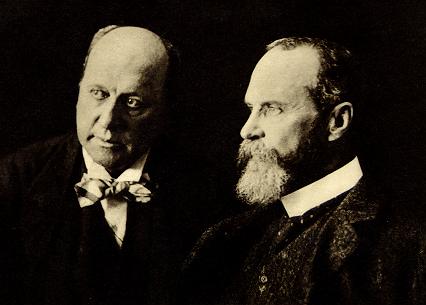Thursday, December 18, 2008; Page A01
The dollar yesterday staged one of its biggest one-day drops against the euro and fell to a 13-year low against the Japanese yen as near-zero interest rates and the Federal Reserve's plan to print vast sums of cash dilute the value of the greenback.( Quantitative Easing )
The drops dramatically accelerated the dollar's reversal of fortune over the past three weeks after months of solid gains( THE FLIGHT TO SAFETY IN US BONDS ). The slide underscores the risks the Federal Reserve is taking to jump-start the U.S. economy through aggressive monetary policy( THERE ARE RISKS ).
On Monday, the Fed cut its target for the federal funds rate, at which banks lend to each other, from 1 percent to a target range of 0 percent to 0.25 percent, and effectively vowed to print as much money as it needs to try to pull the United States from a worsening recession ( I'M FOR THIS ).
While that policy may ultimately aid an economic recovery, it is robbing the dollar of value as investors anticipate less interest on their dollar-denominated investments and more bills in circulation, making each one worth a bit less. In response, investors are dumping the dollar and buying up other currencies ( I PREFER TO SAY THAT IF THEY BUY BONDS NOW, AND INFLATION ARISES, THEIR BONDS WILL BE WORTH LESS. ON THE OTHER HAND, SINCE THERE WILL BE MORE DOLLARS IN CIRCULATION, THE DOLLARS THEY ARE HOLDING NOW WILL BE WORTH LESS ( FROM QUANTITATIVE EASING ) ).
If the dollar's fall is unchecked, it could jeopardize the long-term faith of foreign investors in the value of the American currency and could cause foreign investors to dump U.S. stocks and other assets, whose value would be worth less in euros or yen( TRUE ). The Dow Jones industrial average fell 1.1 percent yesterday.
A sharp rise in the value of foreign currencies could slow economic recovery in Europe and Japan because it would make their exports more expensive in the United States ( TRUE ). A steep, sustained fall in the dollar could force the Fed to abruptly raise interest rates to prop it up( IN ORDER TO GIVE INVESTORS AN INCENTIVE TO BUY BONDS BECAUSE OF THE HIGHER INTEREST RATES, AND THEIR DOLLARS WOULD GAIN IN VALUE IF THE MONEY SUPPLY CONTRACTS ). That would drive up costs( BECAUSE IT WOULD BE PAYING MORE INTEREST ) for the U.S. Treasury as it seeks to raise cash for bailouts by issuing billions of dollars worth of new debt to investors.
"The risk is that the deceleration of the dollar could cascade, and push interest rates up as the rest of the world demands a higher return on U.S. investments," said C. Fred Bergsten, director of the Peterson Institute for International Economics.
But higher interest rates could weaken demand even more. The deteriorating economic outlook helped send oil prices down yesterday to $40.06 on the New York Mercantile Exchange, despite production cuts by the Organization of the Petroleum Exporting Countries, and the falling dollar, which should help drive up oil prices because they are denominated in dollars( AND SO WORTH LESS ).
The dollar shed about 3 percent against the euro yesterday, falling to $1.44. It lost 1.3 percent against the Japanese yen, dropping to 87.93, the lowest since July 1995.
The slide marks another turn on the dollar's roller coaster year, which it began at multiyear lows when the U.S. economy slowed even as much of the rest of world was still growing. But as investors began to grasp that Europe and Japan were facing recessions as bad, if not worse, than the one in the United States, the dollar staged a rally. Between July and November, the dollar climbed about 24 percent against a basket of six major world currencies( MAINLY THE FLIGHT TO SAFETY ).
The Fed's aggressive interest rate policy ( QUANTITATIVE EASING ), coupled with a sense that the United States may face dire problems in the auto industry( MORE EASING AND DEBT ), have erased about half those gains in the past three weeks. Up until recently, emerging market currencies were also losing ground against the dollar. The Chinese, analysts say, have been massively intervening in currency markets in recent months to weaken( KEEP IT CHEAP ) the yuan and make Chinese exports more competitive overseas( BY STAYING CHEAP ). But the yuan has jumped 0.7 percent against the dollar this month, despite continued Chinese intervention.
That is good news for U.S. exporters ( OUR GOODS ARE CHEAPER ). The cheaper dollar earlier this year had boosted overseas sales of American-made products from airplanes to soybeans, making exports a rare bright spot of the economy. In recent months, however, the export boom has faded as the dollar strengthened and the global economy waned. The suddenly weaker dollar may now help put U.S. exports back on track, just when the economy needs all the help it can get ( THEORETICALLY, EXPORTS SHOULD GO UP WITH A CHEAPER DOLLAR, AND, AT SOME POINT, AS THE ECONOMY DOES BETTER, THE DOLLAR WILL STABILIZE OR TURN AROUND ).
The dollar's fall, however, is making it far harder for Europe and Japan in particular to export their way out of recession ( THEIR GOODS ARE GETTING MORE EXPENSIVE FOR US ).
Japan, which already has near-zero interest rates, has little room to lower them further to weaken the yen. But analysts say Tokyo is likely buy more dollars ( THAT SHOULD STRENGTHEN THE DOLLAR, MAKE THE YEN CHEAPER ) in an attempt to drive the yen down in value.
The dollar's fall is putting particular pressure on the European Central Bank to follow the Federal Reserve and the Bank of Japan and dramatically cut interest rates ( WITH THEIR HIGHER INTEREST RATES AND RETURN, MONEY IS GOING THERE AND NOT TO THE DOLLAR ), according to analysts. The ECB has been reluctant to slash rates too deeply, partly because it fears that inflation will reemerge in major countries like France( THIS SHOULD BE EXPLAINED ) should rates fall too low.
Yet analysts say the weakened dollar may force the ECB to cut rates, fearing the steep climb in the euro could make it far harder for export-driven economies like Germany to stage a recovery. Some in Europe are responding aggressively. The Central Bank in Norway, which does not use the euro, dramatically slashed key interest rates yesterday by 1.75 percent to 3 percent.
"This really puts the Europeans in a corner," said Simon Johnson, former chief economist at the International Monetary Fund and an economist at the Massachusetts Institute of Technology. "They can't just sit there and watch the euro climb( EXPORTS WILL GO DOWN, HURTING THEIR ECONOMY )."
Other analysts argue that the dollar may surge again in the weeks ahead, particularly if the Fed's aggressive moves begin to show signs of lifting the U.S. economy ( IF QUANTITATIVE EASING WORKS ).
"I'm a little skeptical that this is the end of the dollar's rebound," said John Shin, currency strategist at Merrill Lynch in New York. "Investors are reacting to the anticipation and the actuality of the Fed's plan to flood the world with dollars. But the U.S. is not alone in its problems, and you're seeing particular stress on the European economy. You have to think that the Fed is ahead of the curve, and by the time the Europeans get there, the U.S. economy may be better positioned for recovery( OTHER COUNTRIES WILL END UP DOING WHAT WE'RE DOING, GIVING THEM NO COMPETITIVE ADVANTAGE WITH HIGHER INTEREST RATES, GIVING THE DOLLAR STRENGTH AGAINST THE OTHER CURRENCIES )."
The Dollar's steep rise was the Flight To Safety, the steep decline is Fear Of Inflation. Both are likely overreactions to actual conditions. I hope.







































No comments:
Post a Comment